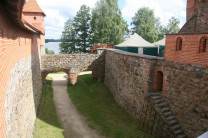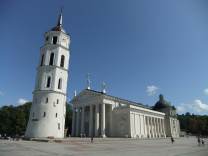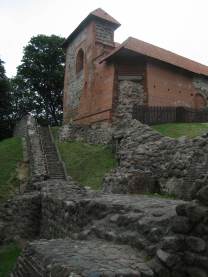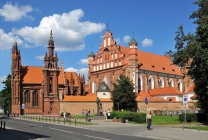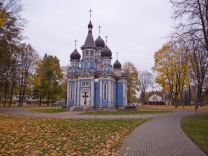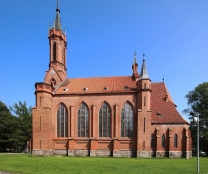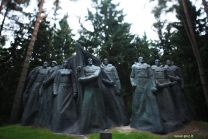No video yet
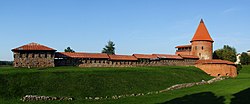
Kaunas Castle
Kaunas Castle is a medieval castle in Kaunas, the second-largest city in Lithuania. Archeological evidence suggests that it was originally built during the mid-14th century, in the Gothic style. Its site is strategic – a rise on the banks of the Nemunas River near its confluence with the Neris River. At the beginning of the 21st century, about one-third of the castle was still standing.
History
The precise construction date of the first Kaunas Castle is unknown. Archaeological data suggests that a stone castle was built on the site during the middle of the 14th century. Situated on an elevated bank near the river junction about 100 kilometers (62 mi) from the capital city of Vilnius, it served as a strategic outpost and guarded nearby cities as well as trade routes.
Kaunas Castle in 19th centuryA written account states that in 1361, the Grand Master of the Teutonic Knights Winrich von Kniprode issued an order to gather information about the castle, specifically the thickness of its walls, as preparation for an assault on the castle. In March–April 1362, the castle was besieged by the Teutonic Order. During this attack, the Teutonic Knights constructed a siege tower and erected wall-penetration machinery; primitive fire arms might have been used, since gunpowder technology was emerging in Europe. At that time, the castle walls were over 11 meters (36 feet) high, when its firing galleries are factored in. According to Wigand of Marburg, the castle's garrison consisted of about 400 Lithuanians soldiers, commanded by Vaidotas, son of Duke Kęstutis. After three weeks, the Knights managed to breach the castle's walls, and soon afterwards the castle was taken. On Easter Sunday in 1362, the knights conducted a Mass at the castle to commemorate their victory.
Apparently, of the castle's defense force of 400, only 36 survived. Questions remain with regard to the castle's defenders' lack of support from outside during the siege. In any event, Kęstutis soon regained and rebuilt Kaunas Castle, but it remained a point of contention between Lithuanians and Teutonic Knights for...






